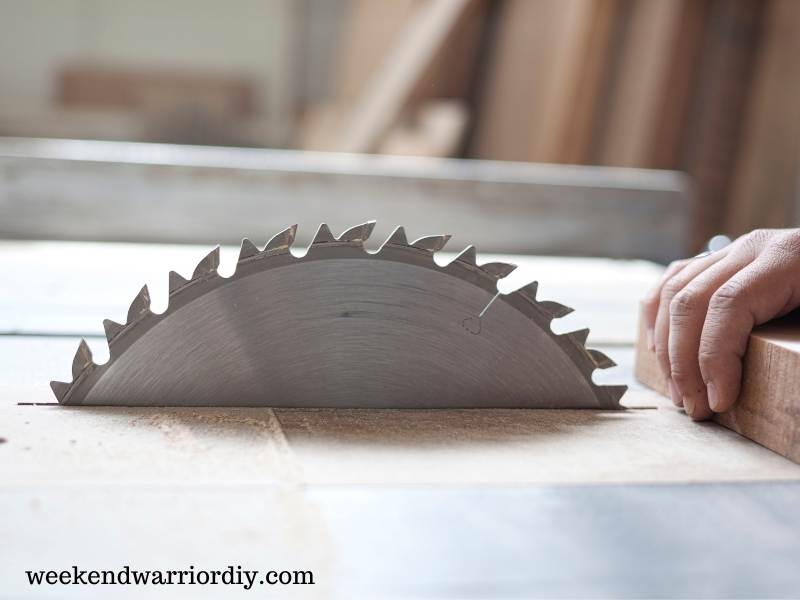In the realm of woodworking and DIY projects, the significance of having the right tools cannot be overstated. Two prevalent contenders for routing tasks are trim routers and plunge routers. Nevertheless, the decision between these two can be perplexing. This guide is designed to demystify the key attributes, advantages, and considerations associated with both trim routers and plunge routers, empowering you to make a discerning choice that aligns with your needs and aspirations.
Trim Router vs. Plunge Router: Unveiling the Distinctions
Trim Router:
- Also recognized as laminate trimmers, palm routers, or compact routers.
- Displaying a compact and lightweight nature, facilitating ease of handling and maneuverability.
- Well-suited for tasks such as edge trimming, ornamental work, and routing on a smaller scale.
- Particularly ideal for projects demanding precision and a deft touch.
Plunge Router:
- Crafted for more versatile routing endeavors, encompassing profound cuts and grooves.
- Encompasses a plunging mechanism, enabling the router bit to be lowered into the workpiece.
- Tailored for tasks like mortising, engraving, and excavating wood.
- Offers the flexibility of both plunge and fixed-base alternatives, elevating its utility.
Pros and Cons of Trim Routers
Pros:
- Adept at intricate work and the creation of delicate designs.
- Sporting a lightweight build, they are effortlessly controlled, minimizing user fatigue.
- Excelling in the art of rounding edges and incorporating decorative nuances.
- Tailor-made for projects necessitating controlled and shallow cuts.
Cons:
- Tend to exhibit less power when juxtaposed with their larger counterparts.
- The smaller base might compromise stability, especially on more substantial workpieces.
- Prone to falling short when tasked with heavy-duty assignments or cuts of greater depth.

Pros and Cons of Plunge Routers
Pros:
- Inherently versatile and formidable – they tackle a comprehensive array of tasks.
- The plunging mechanism endows them with the capacity for precise depth adjustments.
- Proven effective for both shallow and deep cuts, contingent on the bit and configuration.
- The enlarged base contributes to augmented stability, proving advantageous on larger projects.
Cons:
- Displaying a greater heft and bulk – they might necessitate heightened effort for manipulation.
- Can be slightly overwhelming for novices due to the incorporation of the plunge mechanism.
- Command a relatively higher price point when juxtaposed with trim routers.
Best Use Cases for Trim Routers
- Edge Profiling and Trimming: The forte of trim routers lies in shaping edges, crafting profiles, and trimming laminates. Their compact structure empowers pinpoint control and precision in tasks demanding subtlety.
- Decorative Inlays and Designs: If your aspirations encompass the integration of intricate inlays or decorative patterns into your woodworking ventures, a trim router emerges as the quintessential tool.
- Small-Scale Joinery: When confronted with small-scale joinery tasks like creating hinge mortises or dadoes, the precision offered by a trim router proves invaluable.
Best Use Cases for Plunge Routers
- Deep Grooves and Rabbets: Plunge routers shine when tasked with operations entailing the carving of deep grooves, rabbets, or dadoes in wood.
- Template Routing: The plunge router assumes the mantle of excellence when it comes to following templates or guides to recreate uniform shapes.
- Hollowing and Engraving: When projects mandate the hollowing out of wood or the intricate art of engraving, the plunge router emerges as the tool of choice.
Ready to Choose Your Router?
Whether you’ve decided on a trim router for precision or a plunge router for versatility, you can find a wide selection of both types on Amazon. To help you get started, here are some highly rated options to consider:
- Trim Routers on Amazon: Browse through a variety of trim routers suitable for detailed work and edge trimming.
- Plunge Routers on Amazon: Explore plunge routers designed for deep cuts, template routing, and more.
Click the links above to explore these routers and read reviews from other woodworking enthusiasts. Finding the perfect router to elevate your projects is just a click away!
FAQs about Choosing Between Trim and Plunge Routers
- Are plunge routers harder to control than trim routers? Not inherently. While there exists a learning curve owing to the inclusion of the plunging mechanism, plunge routers offer unparalleled versatility across tasks.
- Can I use a trim router for heavy-duty tasks? Trim routers are better aligned with light and intricate work. For more demanding tasks, the plunge router emerges as the recommended choice.
- Do plunge routers come with fixed bases as well? Certainly, a multitude of plunge routers proffer the option to transition seamlessly between plunge and fixed bases, amplifying their utility.
- Are trim routers suitable for professional woodworking? Undoubtedly, particularly for tasks underscoring precision and meticulous detailing. However, professionals might also derive value from the versatility offered by plunge routers.
- Can I switch router bits with ease on both types of routers? Affirmative, both trim and plunge routers facilitate expedient bit changes, thus augmenting workflow efficiency.
- What safety precautions should I heed when operating routers? Prioritize safety by donning protective eyewear and hearing protection. Ensure secure fastening of the router, and refrain from bringing hands near the bit.

Making an Informed Decision: Factors to Consider
When contemplating whether to invest in a trim router or plunge router, several critical factors should inform your decision. Let’s delve into some key considerations that can guide you toward making the right choice for your woodworking endeavors.
Project Scale and Scope: The nature of your projects plays a pivotal role in determining the type of router that suits your needs. If your projects predominantly involve intricate detailing, delicate designs, and small-scale work, a trim router’s precision and maneuverability might be the perfect match. On the other hand, if your projects range from crafting deep grooves to hollowing out wood, the plunge router’s versatility comes to the forefront.
User Experience and Skill Level: Your familiarity with routers and your level of expertise also contribute to the decision-making process. If you’re a beginner, a trim router might be more approachable due to its compact size and ease of control. However, with practice, mastering a plunge router’s plunging mechanism can lead to a broader skill set and the ability to tackle more complex tasks.
Workspace and Storage: Consider the space you have available for your woodworking endeavors. Trim routers – with their smaller form factor – are often favored in compact workspaces. Conversely, if you have ample space and envision tackling a wide range of projects, a plunge router’s larger build might fit the bill.
Budget and Investment: Budget considerations are paramount when purchasing tools. While trim routers generally come at a more affordable price point, plunge routers tend to be pricier due to their enhanced capabilities. Weighing the investment against the tasks you intend to undertake can help you strike the right balance between cost and functionality.
Tips for Safe and Effective Router Use
Regardless of whether you opt for a trim router or plunge router, safety should always be a top priority. Here are some invaluable tips to ensure your routing experience is both productive and secure:
- Protective Gear: Wear safety goggles, hearing protection, and appropriate clothing to shield yourself from debris and noise.
- Secure Workpiece: Always secure your workpiece using clamps or a vice to prevent movement during routing, ensuring accuracy and safety.
- Router Speed and Bit Selection: Adjust your router’s speed based on the material you’re working with and the bit you’re using. Smaller bits generally require higher speeds, while larger bits necessitate slower speeds.
- Direction of Feed: When routing along the edge of a workpiece, move the router against the rotation of the bit. For internal cuts, move the router in a counterclockwise direction.
- Depth of Cut: Gradually adjust the depth of the cut to avoid overloading the router and ensuring a clean, precise cut.
- Router Base Stability: Maintain firm and stable contact between the router base and the workpiece to prevent wobbling or uneven cuts.
- Router Bit Changes: Ensure the router is unplugged before changing bits. Use a wrench to secure the bit and avoid over-tightening, which can damage the collet.
- Cord Management: Keep the router’s cord out of the way to prevent tripping hazards and interference during routing.
By adhering to these safety guidelines and practicing responsible router usage, you’ll enhance your woodworking skills while minimizing the risk of accidents or injuries.
Final Thoughts
In the intricate deliberation of whether to opt for a trim router or plunge router, the ultimate verdict hinges on the inherent characteristics of your projects. Should your creative endeavors revolve around intricately detailed designs and smaller-scale tasks, the trim router beckons. Conversely, if your aspirations span the gamut of tasks ranging from deep cuts to excavations, the plunge router assumes the mantle of indispensability.
Irrespective of the route you embark upon, safety should reign supreme. Equip yourself with the appropriate protective gear, acquaint yourself with the router’s features and configurations, and delve into your woodworking ventures with confidence. The judicious selection of the right router will invariably elevate your woodworking prowess, culminating in projects of refined quality and professional caliber.
Thanks for reading and best of luck with your DIY endeavors.



